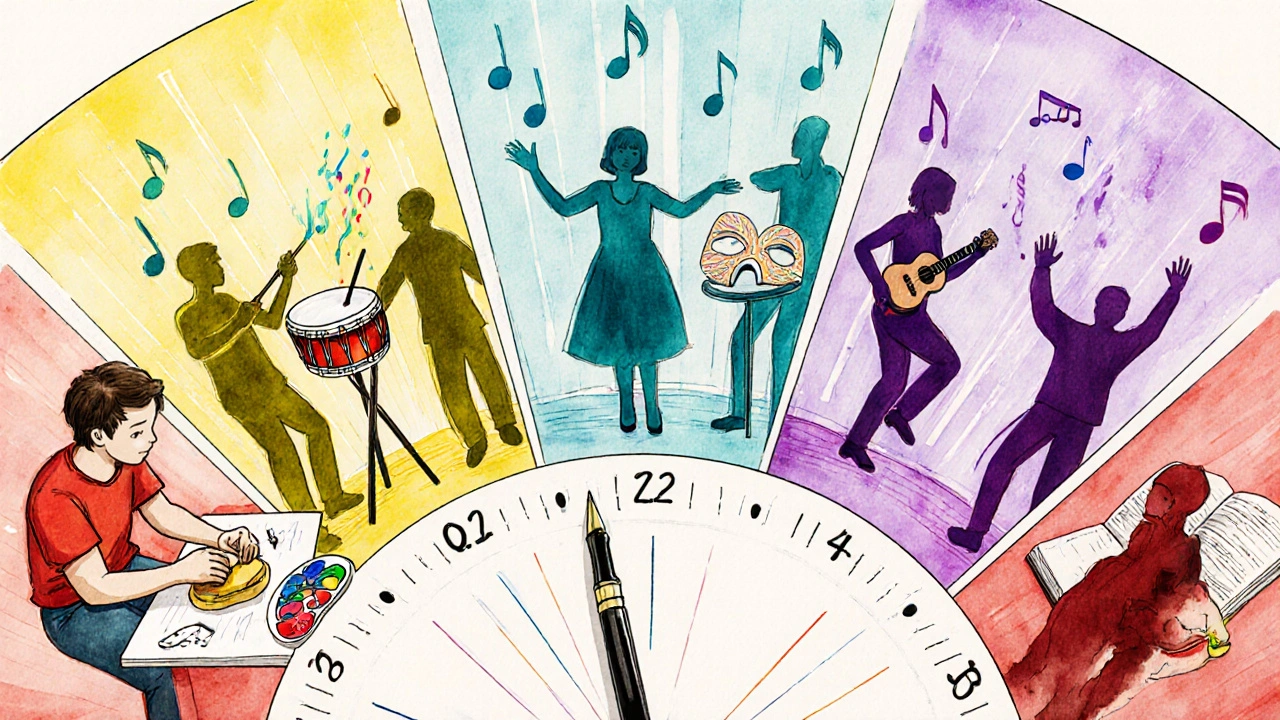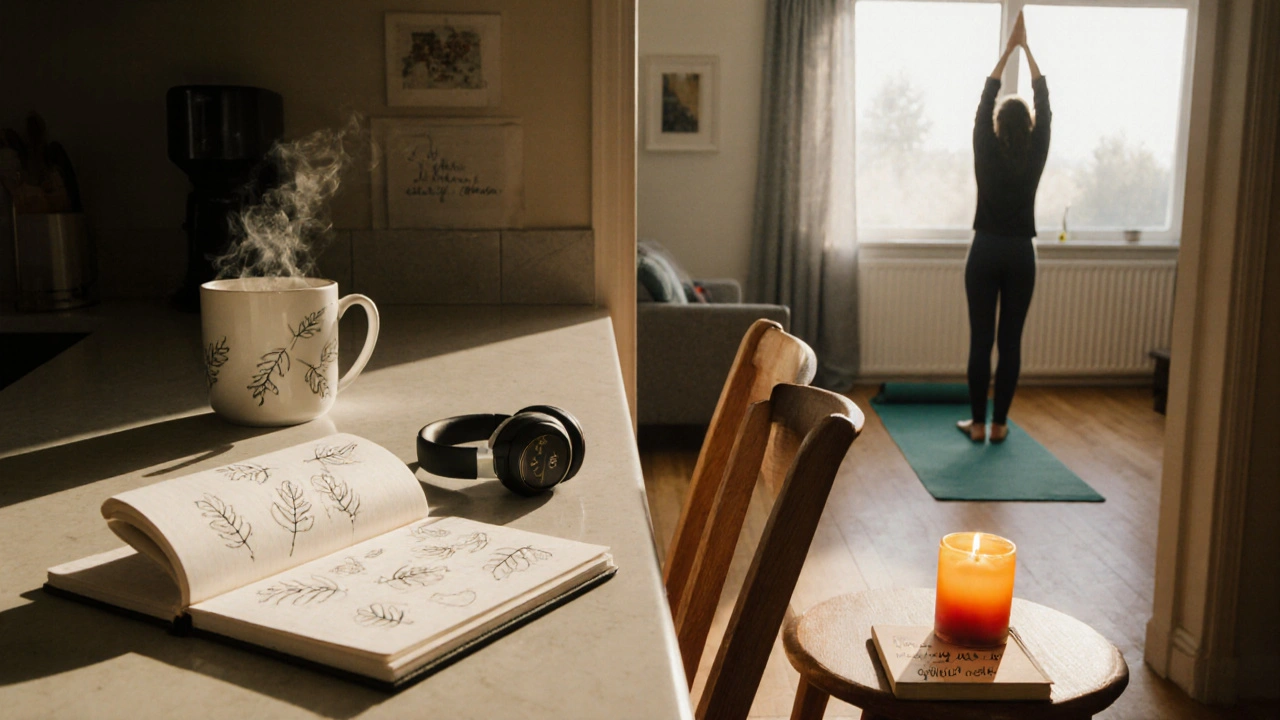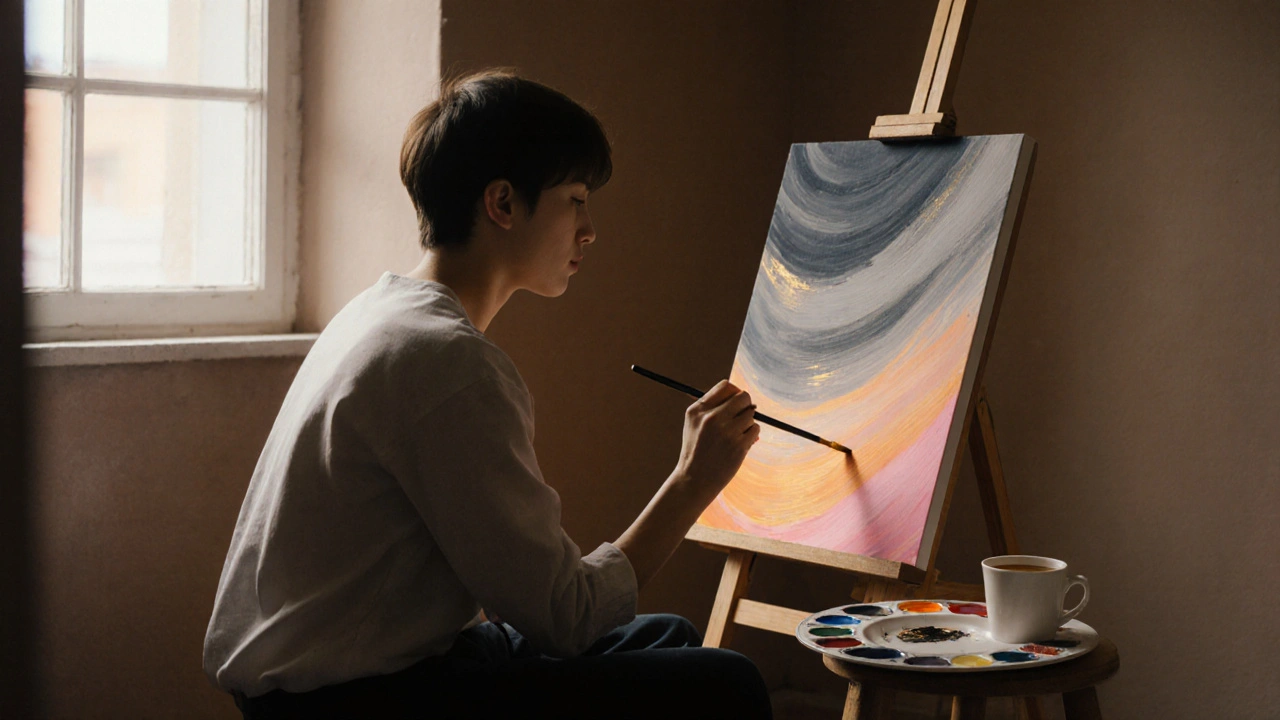Imagine sitting in a quiet room, brush in hand, and watching colors turn anxiety into calm. That moment isn’t magic-it’s the power of creative arts therapies in action.
Creative Arts Therapies is a collection of evidence‑based therapeutic approaches that use visual art, music, movement, drama, and writing to promote mental, emotional, and physical well‑being. These modalities help people express feelings that words alone can’t capture, rewiring the brain for resilience while fostering a sense of purpose.
What Makes Creative Arts Therapies Different?
Traditional talk therapy relies on conversation, but creative arts therapies engage the whole person-body, mind, and senses. By tapping into non‑verbal channels, they reduce the pressure to articulate complex emotions, allowing intuition and spontaneity to lead the healing process.
Key Modalities and How They Work
Each modality brings its own toolbox. Below is a quick snapshot of the most common forms.
Art Therapy uses drawing, painting, collage, or sculpture to explore inner experiences. The therapist guides the client in reflecting on colors, shapes, and symbols, turning visual output into insight.
Music Therapy employs playing instruments, singing, or listening to structured playlists. Rhythm can reset heart rate variability, while melody activates pleasure pathways linked to dopamine release.
Dance/Movement Therapy encourages free‑form or choreographed movement. The body’s kinetic memory unlocks trauma stored in muscle patterns, letting participants physically release tension.
Drama Therapy invites role‑play, storytelling, and improvisation. By embodying different characters, clients rehearse new coping scripts and gain perspective on real‑life conflicts.
Expressive Writing Therapy focuses on free‑writing about personal experiences. Structured prompts turn raw narrative into a coherent story, reducing rumination and stress hormones.
Guided Imagery blends verbal direction with visual imagination, often paired with gentle music. It creates a safe mental space where trauma can be revisited and reframed.
Mindfulness‑Based Art Therapy merges mindfulness meditation with creating art, grounding participants in the present moment while they explore emotional textures.
Research‑Backed Benefits
- Reduces cortisol levels by up to 30% after a single session (American Journal of Psychiatry, 2023).
- Improves social connectivity in older adults, decreasing feelings of isolation by 25% (Gerontology Review, 2022).
- Boosts neuroplasticity markers such as BDNF in post‑stroke patients engaging in music therapy (Neurology Today, 2024).
- Enhances self‑esteem and reduces depressive symptoms in teenagers using drama therapy (Journal of Adolescent Health, 2021).
- Accelerates grief processing; participants report a 40% faster acceptance timeline after 8 weeks of expressive writing (Grief Studies, 2023).
These findings are more than numbers-they translate into real‑world stories of people who rediscovered hope through a paintbrush, a drumbeat, or a simple story.
How to Try Creative Arts Therapies on Your Own
- Pick a Modality That Resonates: If you love music, start with a daily 10‑minute rhythm exercise. If you’re a visual thinker, grab a sketchbook.
- Create a Safe Space: Choose a quiet corner, dim lights, or a favorite playlist. Remove distractions.
- Set an Intention: Before you begin, name a feeling you want to explore-anxiety, grief, excitement.
- Engage Without Judgment: Let the process flow. If you’re painting, don’t worry about “good” technique; focus on color choices.
- Reflect: After the session, jot down any thoughts, images, or bodily sensations that emerged.
- Repeat Consistently: Aim for 2‑3 sessions per week. Consistency builds the neural pathways that support lasting change.
For those who prefer a guided approach, many community centers now offer drop‑in art‑making circles, while online platforms host live music‑making workshops led by certified therapists.

Choosing a Professional Therapist
When self‑guided work isn’t enough, a credentialed therapist can deepen the experience. Look for certifications such as:
- Board‑Certified Art Therapist (ATR‑BC)
- Certified Music Therapist (MT‑BC)
- Certified Dance/Movement Therapist (MADCT)
- Registered Drama Therapist (RDT)
Ask about their training, the populations they specialize in, and whether they incorporate a multimodal approach-often the most effective strategy for complex trauma.
Comparing Modalities at a Glance
| Modality | Primary Tools | Typical Benefits | Common Settings |
|---|---|---|---|
| Art Therapy | Paint, clay, collage | Emotion identification, stress reduction | Hospitals, schools, private studios |
| Music Therapy | Instruments, voice, playlists | Improved mood, pain relief, cognitive stimulation | Rehabilitation centers, senior homes |
| Dance/Movement Therapy | Improvised movement, choreography | Body awareness, trauma release, social connection | Community centers, mental‑health clinics |
| Drama Therapy | Role‑play, storytelling, mask work | Perspective shift, communication skills, confidence | Therapeutic schools, correctional facilities |
| Expressive Writing | Journals, prompts, free‑writing | Reduced rumination, better immune function | Online programs, support groups |
Common Myths Debunked
- Myth: You need artistic talent. Reality: The value lies in expression, not skill.
- Myth: It’s only for kids. Reality: Adults, seniors, and veterans benefit equally.
- Myth: It replaces traditional therapy. Reality: It often works best alongside talk therapy.

When to Seek Help
If you notice any of the following, consider reaching out to a licensed therapist:
- Persistent feelings of hopelessness or worthlessness.
- Trauma that resurfaces despite self‑practice.
- Physical symptoms such as chronic pain that aren’t improving.
- Difficulty maintaining daily routines or relationships.
A professional can tailor the modality to your specific needs, ensuring safety and deeper impact.
Integrating Creative Arts into Everyday Life
Even if you’re not in formal therapy, small creative habits can keep the benefits flowing:
- Carry a pocket‑size sketchbook for doodles during commute.
- Create a “soundtrack” for stressful tasks-choose songs that calm you.
- Practice a 5‑minute movement break, stretching to music you love.
- Write a short gratitude note each night, focusing on sensory details.
The goal isn’t to become an artist overnight, but to give your mind a new language for healing.
Frequently Asked Questions
What age groups can benefit from creative arts therapies?
Anyone from early childhood to older adulthood can engage. The techniques are adapted to developmental level, so toddlers use simple art, while seniors might prefer music or gentle movement.
Do I need a medical referral to start?
No referral is required for community‑based classes, but insurance often covers sessions when a physician writes a prescription for mental‑health care.
How long does a typical session last?
Sessions range from 45minutes to 2hours depending on the setting and modality. Group workshops may run longer to allow sharing.
Can I combine multiple modalities?
Absolutely. Many therapists blend art, music, and movement to address complex needs. The key is to keep the plan cohesive and purposeful.
Is there scientific evidence supporting these therapies?
Yes. Peer‑reviewed studies show reductions in cortisol, improvements in mood scales, and measurable changes in brain imaging after regular creative arts therapy sessions.

